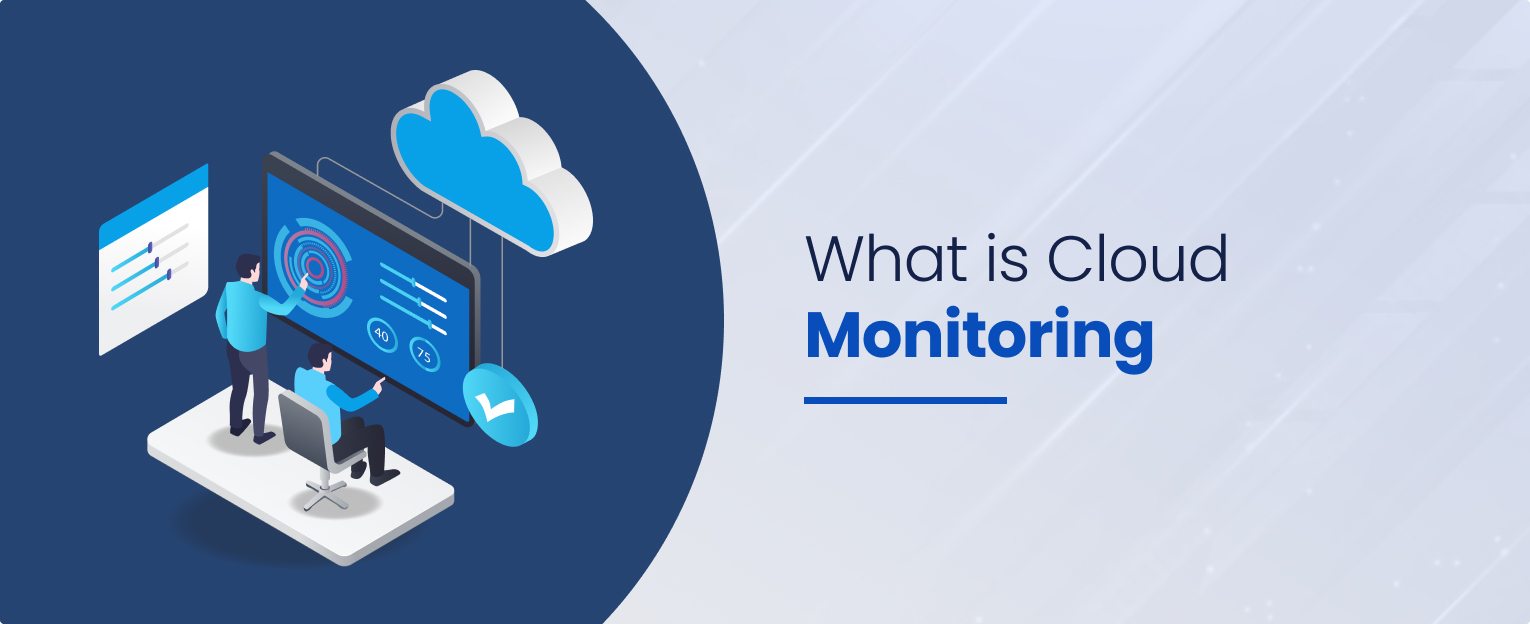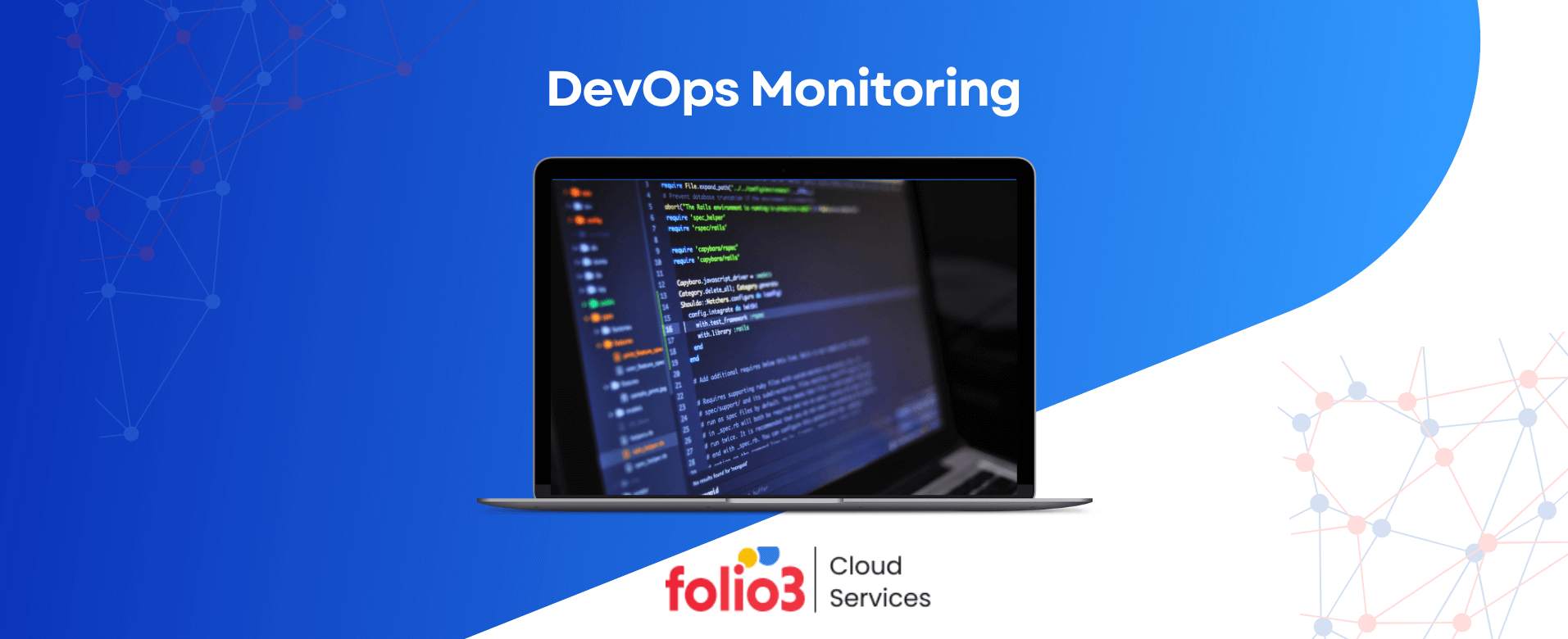Businesses are increasingly adopting cloud-based infrastructures to efficiently store, manage, and scale their data, applications, and services. This is to provide unparalleled end-user experience by improving the time to delivery and staying ahead of the competition. This is one area where cloud monitoring services can have significant benefits for a business. For example, it helps businesses to streamline their operations, enhance stability and availability of their systems and resources, and also helps them reduce their operational costs.
However, as more and more organizations are moving towards cloud-based infrastructures, and the complexity and scale of cloud environments is rapidly growing. It has become imperative, more than ever, for organizations to implement effective cloud monitoring strategies, to prevent any critical data loss or data breach.
In this article, we will cover what is cloud monitoring, and explore its significance and the benefits it brings to businesses. We will also provide insights into cloud monitoring best practices and different applications and performance monitoring measures.
Understanding Cloud Monitoring and Why it is Critical?
Let us first understand what cloud monitoring is. Cloud monitoring is the process of continuously monitoring and analyzing the health of cloud resources, such as services and applications. This is done to prevent their downtime and ensure that these resources are secure and available.
It is critical to keep a check on the health of the environment in which the entire IT architecture of an organization is deployed. If businesses fail to effectively monitor the cloud where their resources are deployed, the fallout could be significant.
To prevent this from happening, organizations deploy cloud monitoring tools to collect and analyze the event logs generated within their cloud environment. With the help of data generated from these automated tools, they are able to proactively detect any issues and other potential bottlenecks before the business operations or end-user experience is affected or disrupted. Learn critical challenges of Cloud Monitoring in-depth.

Supercharge Your Business with Expert Managed Cloud Services
Unlock business growth with our industry-leading managed cloud services. Experience scalability, security, and dedicated support tailored to your needs.
Benefits of Cloud Monitoring
Monitoring cloud services have numerous benefits and can impact a business positively. It plays a crucial role in maintaining the overall health and performance of a business’s cloud environment. Additionally, it enables organizations to:
1. Identify Performance Issues Ahead of Time
Cloud monitoring empowers businesses to identify performance bottlenecks, such as slow response times or resource limitations ahead of time, which could impact user experience and productivity. By monitoring metrics like CPU usage, network latency, and application response times, organizations can promptly address these issues and optimize their cloud infrastructure for optimal performance.
2. Ensure Availability and Reliability
Downtime or service interruptions can have severe consequences for a business. It can be expensive as they can potentially lose customers because of it. By monitoring metrics such as uptime, network connectivity, and server health, organizations can proactively identify potential failures early on and take necessary measures to maintain high availability and reliability of their cloud resources.
3. Enhance Security and Compliance
Maintaining robust security measures within a cloud environment is paramount for businesses. Cloud monitoring tools provide insights about potential security threats, such as unauthorized access attempts or unusual network activity. By monitoring security logs, organizations can promptly detect and respond to security incidents. This can ensure the confidentiality, integrity, and availability of their data.
4. Cost Optimization
Moreover, cloud monitoring can also help businesses identify underutilized resources. By analyzing metrics such as CPU utilization and storage usage, organizations can optimize resource allocation and reduce unnecessary costs. Additionally, monitoring allows businesses to identify and address inefficient processes, leading to further cost savings.
Cloud Monitoring for Different Cloud Architectures
Now that we have discussed the numerous benefits that an organization can have by diligently monitoring its cloud infrastructure, let’s understand how they can effectively monitor the health of different cloud types. Organizations can either have their resources deployed on a Private Cloud, a Public Cloud or have a Hybrid Cloud structure implemented.
Private clouds are deployed on-premises and are relatively easier to monitor due to the control and visibility offered by on-premises infrastructure. However, monitoring workload and network performance is still essential in order to gather data for configuring or optimizing cloud processes.
In contrast, public clouds present challenges with limited visibility, making cloud monitoring an essential requirement to ensure seamless business operations. Despite the additional effort required, cloud monitoring provides valuable insights into resource consumption, end-user experience, and control over key metrics, logs, and flows.
Hybrid cloud architectures pose unique challenges, as data is distributed across multiple environments. Here, cloud monitoring tools can help mitigate security and compliance issues by assisting administrators in determining data placement, asynchronous updates, and efficient partitioning of data into manageable segments.
Overall, cloud monitoring is indispensable regardless of the cloud type, enabling businesses to optimize performance, ensure resource efficiency, and maintain a secure and compliant cloud environment.
Best Practices for Effective Cloud Monitoring
To maximize the effectiveness of cloud monitoring, businesses should consider the following best practices:
1. Define Key Performance Indicators (KPIs)
Organizations must define relevant KPIs, based on their specific goals and requirements, before implementing cloud monitoring. These KPIs could include metrics such as response times, resource utilization, and error rates. Clear KPIs provide a baseline to evaluate the performance of cloud resources and enable organizations to measure the success of their cloud monitoring efforts.
2. Implement Real-Time Monitoring
Real-time monitoring allows organizations to detect issues as they occur. This facilitates prompt response and minimizes the impact on operations. Businesses can proactively address potential problems and ensure high availability and performance of their cloud resources by leveraging cloud monitoring tools that provide real-time alerts and notifications.
3. Leverage Automated Remediation
Cloud monitoring solutions often integrate with automation tools. This can enable organizations to automate remediation processes in case issues are identified. Businesses can respond to issues more efficiently by setting up automated actions based on predefined thresholds and conditions. Automated remediation helps maintain the stability and reliability of cloud infrastructure.
Get End-to-End Managed Cloud Services
Folio3 offers end-to-end managed cloud services so that your business can leverage the capabilities of modern cloud infrastructures and rapidly scale. We are your partners in your cloud adoption journey. Our consultants will perform a thorough assessment of your current infrastructure, create a reference architecture design for your cloud deployment, assist in cloud migration and strategy planning, and take care of the entire process for you.
Book a consultation with us today to start your journey towards the cloud.

Managed Cloud Services: Scale, Secure, and Supercharge Your Business
Experience seamless scalability, robust security measures, and expert management for your cloud infrastructure. Unlock the full potential of your business with our comprehensive managed cloud services.
To sum it up, cloud monitoring is a critical practice for businesses leveraging private, public or hybrid cloud infrastructures. It ensures optimal performance, availability, and security of cloud resources, which enables organizations to maximize the benefits of their cloud environment. By implementing effective cloud monitoring strategies and leveraging specialized services, businesses can proactively detect and resolve issues, enhance performance, and improve overall operational efficiency.
Additional Resources:
- Cloud Implementation Services: Benefits, Solutions and Strategies
- Top 10 Managed Cloud Service Providers Comparison (2024 List)
- Top 10 Security Issues in Cloud Computing (2024)
- AWS Vs Azure Vs GCP – The Cloud Platform of Your Choice?
- What are the Different Types of Cloud Computing Services?














